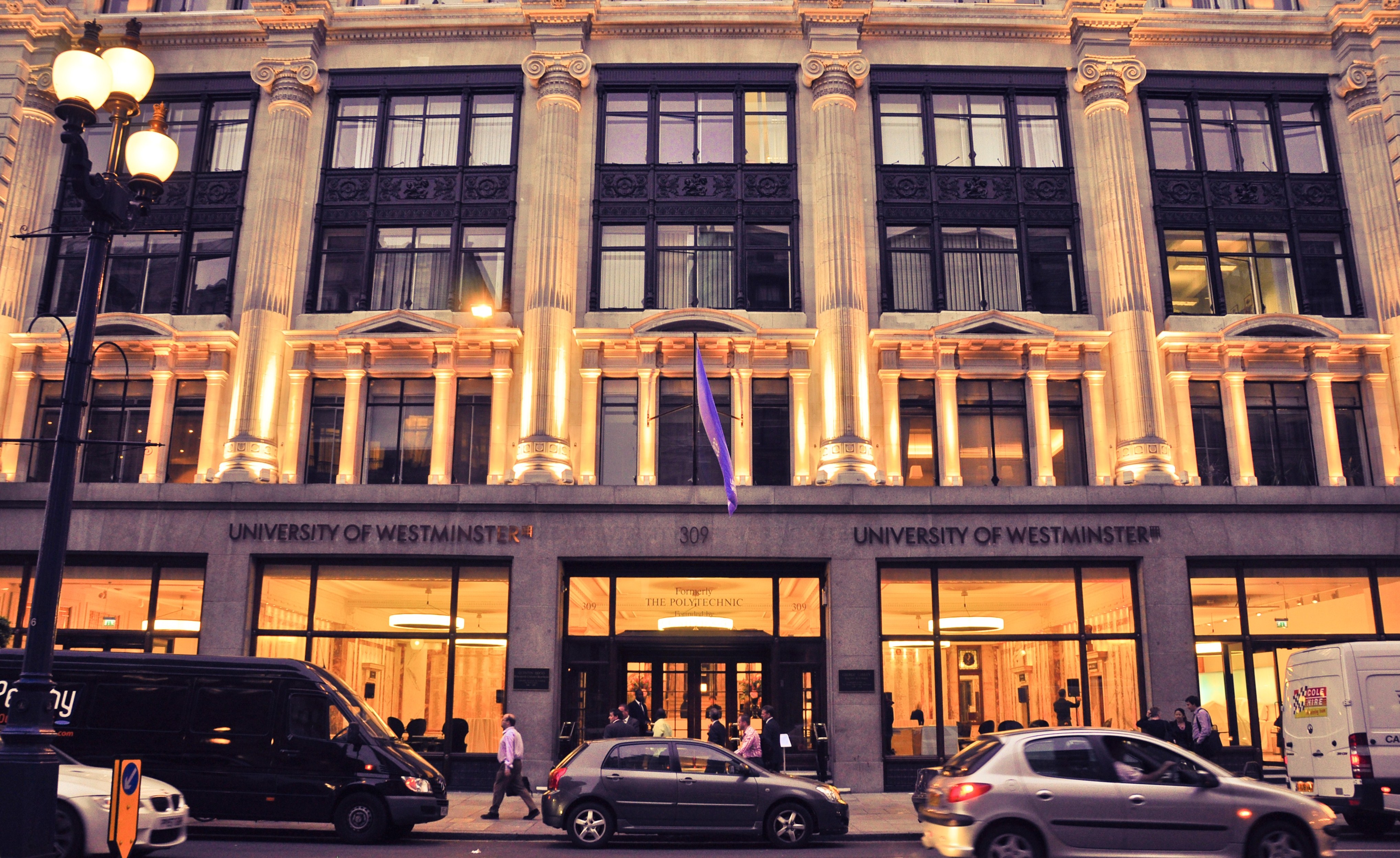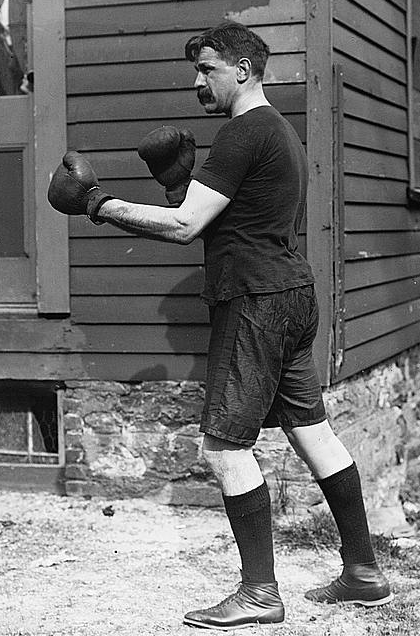|
Studd Trophy
The Studd Challenge Trophy was presented annually from 1898 for the best performance by a Royal Polytechnic Institution athlete during the previous year. History The winners' names are engraved in marble on the staircase wall at the back of the Regent Street foyer of what is now the headquarters of the University of Westminster. Many of the Studd Trophy winners were Olympic or national champions in their particular sport. The trophy is named after Sir John Edward Kynaston Studd. Winners *Frank Parks (1875–1945) in 1902. *Willie Applegarth in 1912–13 * Albert Hill in 1919–20 *Harry Edward in 1922 *Jack London in 1928 *Alan Pascoe Alan Peter Pascoe (born 11 October 1947) is a British former athlete who gained success in hurdles. After his athletics career, he has been successful in events marketing and consulting. Early life and education Pascoe was born in Portsmouth, ... in 1971, 1972, 1973, 1974, 1975 References {{University of Westminster University of Westmins ... [...More Info...] [...Related Items...] OR: [Wikipedia] [Google] [Baidu] |
Royal Polytechnic Institution
, mottoeng = The Lord is our Strength , type = Public , established = 1838: Royal Polytechnic Institution 1891: Polytechnic-Regent Street 1970: Polytechnic of Central London 1992: University of Westminster , endowment = £5.1 million , budget = £205.1 million , chancellor = Lady Sorrell , vice_chancellor = Peter Bonfield , students = () , undergrad = () , postgrad = () , city = London , country = United Kingdom , colours = Royal blue, Fuchsia , website www.westminster.ac.uk, logo = Navbar-westminster-logo.svg , affiliations = The University of Westminster is a public university based in London, United Kingdom. Founded in 1838 as the Royal Polytechnic Institution, it was the first polytechnic to open in London. The Polytechnic formally received a Royal charter in August 1839, and became the University of Westminster in 1992. Westminster has its main campus in Regent Street in central London, with additional campuses in Fitzrovia, Marylebone and ... [...More Info...] [...Related Items...] OR: [Wikipedia] [Google] [Baidu] |
University Of Westminster
, mottoeng = The Lord is our Strength , type = Public , established = 1838: Royal Polytechnic Institution 1891: Polytechnic-Regent Street 1970: Polytechnic of Central London 1992: University of Westminster , endowment = £5.1 million , budget = £205.1 million , chancellor = Lady Sorrell , vice_chancellor = Peter Bonfield , students = () , undergrad = () , postgrad = () , city = London , country = United Kingdom , colours = Royal blue, Fuchsia , website www.westminster.ac.uk, logo = Navbar-westminster-logo.svg , affiliations = The University of Westminster is a public university based in London, United Kingdom. Founded in 1838 as the Royal Polytechnic Institution, it was the first polytechnic to open in London. The Polytechnic formally received a Royal charter in August 1839, and became the University of Westminster in 1992. Westminster has its main campus in Regent Street in central London, with additional campuses in Fitzrovia, Marylebone ... [...More Info...] [...Related Items...] OR: [Wikipedia] [Google] [Baidu] |
John Edward Kynaston Studd
Sir John Edward Kynaston Studd, 1st Baronet (26 July 1858 – 14 January 1944), known as "JEK", was a British cricketer, businessman and Lord Mayor of London. Family Studd was born at Tedworth House, Tidworth, Wiltshire. He married, firstly, Hilda Proctor-Beauchamp, daughter of Sir Thomas William Brograve Proctor-Beauchamp, 4th Bt. and Hon. Catherine Esther Waldegrave, on 10 December 1884. He married, secondly, Princess Alexandra Lieven, daughter of Prince Paul Lieven, on 18 June 1924. He died in Marylebone, London, on 14 January 1944, at age 85. Children of Sir Kynaston Studd, 1st Bt., and Hilda Proctor-Beauchamp: There were no children of the second marriage. Sporting career Cricketing Studds Sir Kynaston was the eldest of the famous three Studd Brothers, and the last of them to captain Cambridge in consecutive seasons. At Eton, Kynaston was never on the losing side in the needle matches against Harrow and Winchester. In 1879 he went up to Trinity College, Cambridge, [...More Info...] [...Related Items...] OR: [Wikipedia] [Google] [Baidu] |
Frank Parks
Francis George Parks (March 1875 – 22 May 1945) was a British amateur heavyweight boxer.Sources tend to confuse and conflate the two brothers. There is a "Frederick Mostyn Parks" listed in Sports Reference as the Olympic medalist. There is "F. Parks" and "Frank Parks" listed in ''The New York Times'' for the exhibition matches in the US. The obituary by the Polytechnic Boxing Club is about "Frank Parks". Other sources use a pastiche of information on each in their records. On January 2, 2011, Elaine Penn, the University Archivist for the University of Westminster wrote: "I have just discovered that Fred and Frank Parks are brothers. I quote from the Poly Boxing Club report in the Polytechnic Magazine for December 1908 (page 173), regarding an Open Competition promoted by the City Police AC: 'Fred. Parks (Frank’s brother) was our other member who showed up most conspicuously, as he beat three men in the earlier bouts and succumbed in the final only through not having eno ... [...More Info...] [...Related Items...] OR: [Wikipedia] [Google] [Baidu] |
Polytechnic Magazine
The Polytechnic Boxing Club for amateur boxing was formed in 1888 and located at 309 Regent Street in London. The name "Polytechnic" comes from the Royal Polytechnic Institute having been formerly at that address which would later become the home of the University of Westminster. Starting in 1898 the boxing club awarded the Studd trophy, named after Sir John Edward Kynaston Studd. The club was a member of the Amateur Boxing Association of England. The ''Polytechnic Magazine'' being the in-house magazine of the school would cover the boxing club along with many other clubs, social activities, and other news. Notable members *Arthur Beavis (1905–1978), twice A.B.A featherweight champion * Bert Brewer (1876–1946), 1899 A.B.A. lightweight champion & 1907 ABA Heavyweight Champion. * John Elliott (1901–1945), 1924–1925 ABA Middleweight Champion. * Pat Floyd (1910–1988), 1946 ABA Heavyweight Champion. * Harry Holmes (1878–1951), Olympic boxer and two times A.B.A champi ... [...More Info...] [...Related Items...] OR: [Wikipedia] [Google] [Baidu] |
Willie Applegarth
William Reuben Applegarth (11 May 1890 – 5 December 1958) was a British track and field athlete, and winner of a gold medal in the 4 × 100 metres relay at the 1912 Summer Olympics. Biography Born in Guisborough, then in the North Riding of Yorkshire, William Applegarth was one of the best European sprinters during World War I. At the Stockholm Olympics, Applegarth was eliminated in the semifinals of the 100 m competition and won a bronze medal in the 200 m. As the anchoring leg in the British 4 × 100 m relay team, he won a gold medal, in spite of finishing second after the US in the semifinal. The United States was later disqualified for a fault in passing the baton; the same mistake was made in the final by the world record holder and main favourite German team. Applegarth was a British AAA champion in in 1913 and 1914 and in from 1912 to 1914. Shortly after the Olympics, Applegarth repeated Donald Lippincott's world record in the 100 m of 10.6 and set a new worl ... [...More Info...] [...Related Items...] OR: [Wikipedia] [Google] [Baidu] |
Albert Hill (athlete)
Albert George Hill (24 March 1889 – 8 January 1969) was a British track and field athlete. He competed at the 1920 Olympics and won gold medals in the 800 m and 1500 m and a silver medal in the 3000 m team race. Biography Hill started out as a long-distance runner, winning the British AAA championships over 4 miles in 1910. During World War I he served with the Royal Flying Corps in France, and after the war changed to middle-distance running. Coached by Sam Mussabini (coach of 100 m Olympic Champions Reggie Walker and Harold Abrahams), he won the 880 yd and 1 mile at the 1919 AAA championships and then equalled the British record of 4:16.8 for 1 mile. He nearly was not selected for the Olympics the following year, the selectors considering the 31-year-old Hill too old. Finally, he was allowed to take part at the Olympics, which were held in Antwerp, Belgium. He made the final in the 800m, which was a closely contested race. In the end, the 31-year-old Hill beat America ... [...More Info...] [...Related Items...] OR: [Wikipedia] [Google] [Baidu] |
Harry Edward
Harry Francis Vincent Edward (15 April 1898 – 8 July 1973) was a British runner. He competed in the 100 and 200 m 1920 Summer Olympics in Antwerp and won bronze medals in both events, becoming the first black person to gain Olympic medals. He injured himself during the 200 m final and therefore withdrew from the 4 × 100 m relay. Within the UK Edward won the AAA championships in the 100 yd and 220 yd in 1920–1922, and in 1922 also took the 440 yd title. Personal life The only son of a Guyanese father and German mother, a Prussian piano teacher, Edward was raised in Germany. His father had left Dominica as a cabin boy and then worked in Germany in a circus and then as the maitre d' in Berlin restaurants. He had one sister, Irene. Brought up and educated in Germany, he spoke English, German and French and was noted for his athletic and academic ability. He was married twice: to Antoinette Kohler Regner, a Swiss national, in 1922 with one stepson, the marriage failed in 19 ... [...More Info...] [...Related Items...] OR: [Wikipedia] [Google] [Baidu] |
Jack London (athlete)
John Edward London (13 January 1905 – 2 May 1966) was a Great Britain, British athlete who competed mainly in the 100 metres. Born in British Guiana, now Guyana, he won a silver and a bronze medal at the 1928 Summer Olympics in Amsterdam. He moved to London as a child. At some point his family moved back to British Guiana, where London attended Queen's College, Guyana, Queen's College in Georgetown. Back in England, London studied at the Regent Street Polytechnic, where he joined the Polytechnic Harriers and was coached by Sam Mussabini. He was elected captain of the sports club in October 1922. He was an early adopter of starting blocks rather than digging footholds in the cinder tracks. He ran the 100 metres in 10.7 seconds to win the race at a competition between England and France at Stamford Bridge (stadium), Stamford Bridge in July 1927, and then won both the 100 metres and the 200 metres at a competition in Paris in October 1927. London competed for Great Britain in ... [...More Info...] [...Related Items...] OR: [Wikipedia] [Google] [Baidu] |
Alan Pascoe
Alan Peter Pascoe (born 11 October 1947) is a British former athlete who gained success in hurdles. After his athletics career, he has been successful in events marketing and consulting. Early life and education Pascoe was born in Portsmouth, and lived in the Paulsgrove area of the city. He was educated at Portsmouth Southern Grammar School for Boys. He undertook higher education at Borough Road College, Isleworth, where he received a Certificate in Education, and the University of London, where he received an Honours degree in Education. He married sprinter Della James in 1970. They have one son and one daughter. Achievements as a competitor Medals Pascoe won medals in the Olympic Games, the European Championships, and the Commonwealth Games., also the European Indoor Games. After the 1974 Commonwealth Games victory Pascoe achieved a major distinction, in celebration he performed one of the great televised sporting bloopers. While doing his victory lap in reverse, Pascoe ... [...More Info...] [...Related Items...] OR: [Wikipedia] [Google] [Baidu] |


.jpg)
